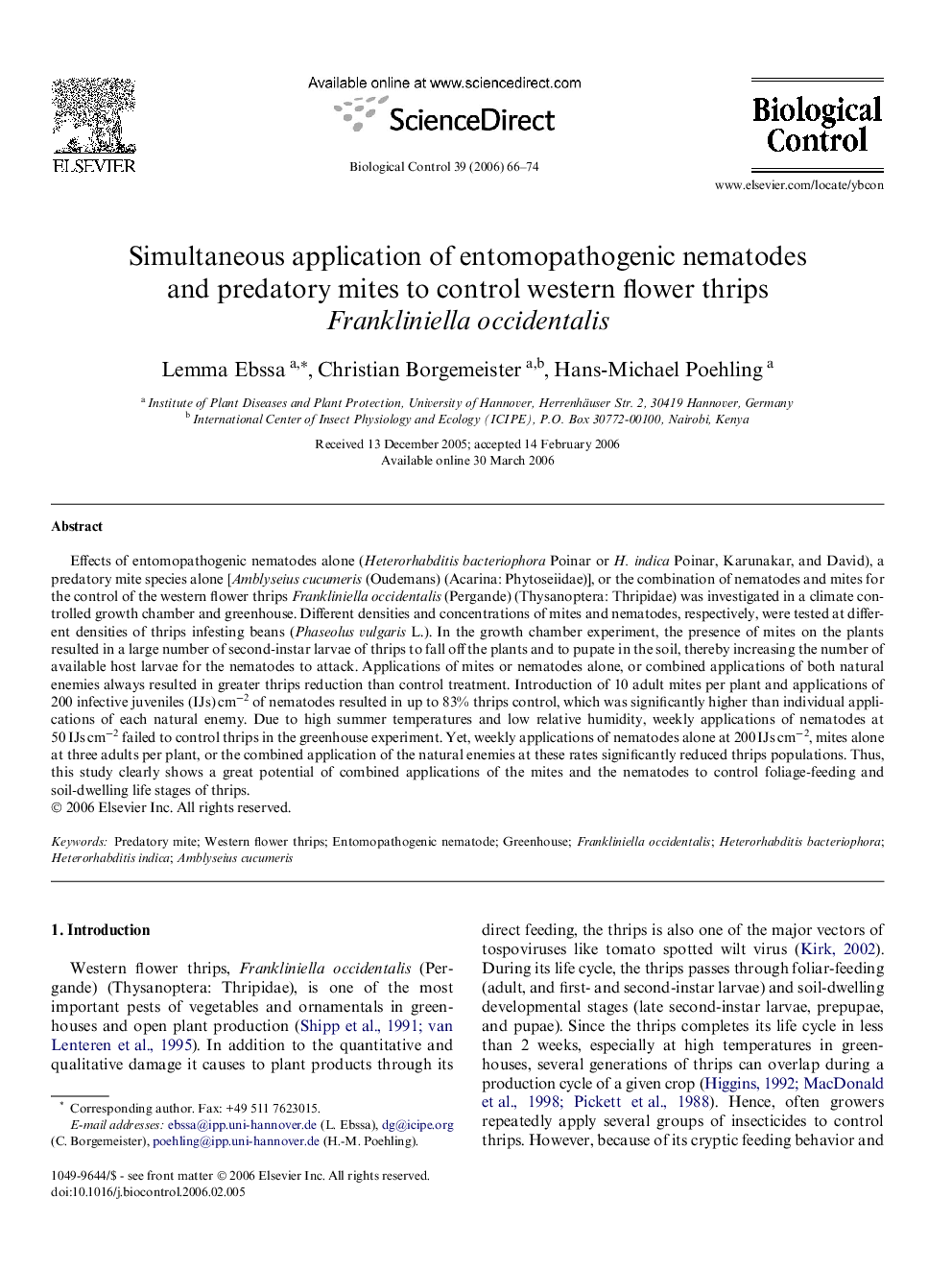| کد مقاله | کد نشریه | سال انتشار | مقاله انگلیسی | نسخه تمام متن |
|---|---|---|---|---|
| 4505237 | 1321134 | 2006 | 9 صفحه PDF | دانلود رایگان |

Effects of entomopathogenic nematodes alone (Heterorhabditis bacteriophora Poinar or H. indica Poinar, Karunakar, and David), a predatory mite species alone [Amblyseius cucumeris (Oudemans) (Acarina: Phytoseiidae)], or the combination of nematodes and mites for the control of the western flower thrips Frankliniella occidentalis (Pergande) (Thysanoptera: Thripidae) was investigated in a climate controlled growth chamber and greenhouse. Different densities and concentrations of mites and nematodes, respectively, were tested at different densities of thrips infesting beans (Phaseolus vulgaris L.). In the growth chamber experiment, the presence of mites on the plants resulted in a large number of second-instar larvae of thrips to fall off the plants and to pupate in the soil, thereby increasing the number of available host larvae for the nematodes to attack. Applications of mites or nematodes alone, or combined applications of both natural enemies always resulted in greater thrips reduction than control treatment. Introduction of 10 adult mites per plant and applications of 200 infective juveniles (IJs) cm−2 of nematodes resulted in up to 83% thrips control, which was significantly higher than individual applications of each natural enemy. Due to high summer temperatures and low relative humidity, weekly applications of nematodes at 50 IJs cm−2 failed to control thrips in the greenhouse experiment. Yet, weekly applications of nematodes alone at 200 IJs cm−2, mites alone at three adults per plant, or the combined application of the natural enemies at these rates significantly reduced thrips populations. Thus, this study clearly shows a great potential of combined applications of the mites and the nematodes to control foliage-feeding and soil-dwelling life stages of thrips.
Journal: Biological Control - Volume 39, Issue 1, October 2006, Pages 66–74